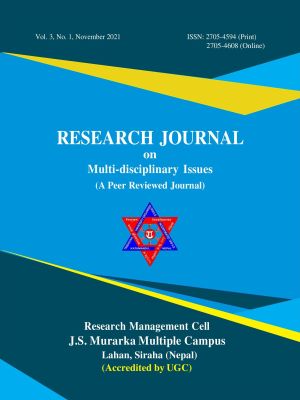Determination of Iodine Content in Different Brands of Common Salts
Keywords:
Iodine deficiency disorders, symptoms, treatment, iodine determinationAbstract
Iodine deficiency disorders (IDD) are recognized as a major global public health problem; it is possible to root out this problem by universal salt iodization. This study was designed to determine iodine concentration in different brand of salt collected from different area of Nepal and India. All samples were collected both in Lahan and India near to Lahan city. Concentration of iodine in salt was determined by iodometric titration method. Reagent was K2Cr2O7, standardized Na2S2O3, KI, NaHCO3, starch, concentrated HCl, H2SO4. Most of the salts collected show iodine level to be in the acceptable range. Result shows that out of nine brands, only seven shown to has a poor content of iodine. It can be decided from the result that most of the people of our country are now using iodized salt aayonune containing high amount of iodine. Evidence is now available from both controlled trials and successful iodization programs that these disorders can be successfully prevented by correction of iodine deficiency.




